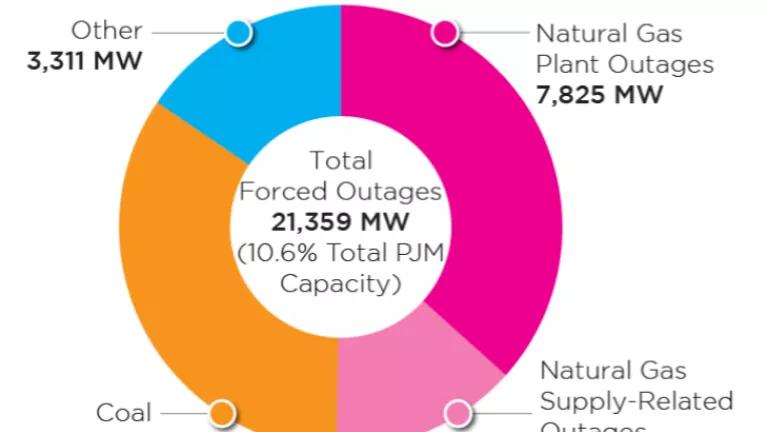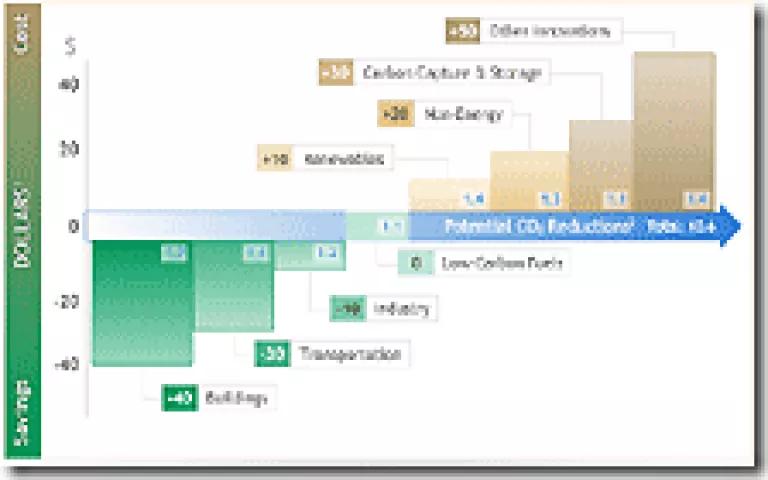
My New Year's resolution is to start thinking big. This is harder than it sounds given that the technologies I think about, renewable energy technologies, each generally provide less than 1 percent of the markets that they serve (and the ones that provide more than 1 percent hydropower and ethanol from corn have limited potential for growth). But if we're going to avoid catastrophic climate change, this has got to change and change big.
First, as a quick detour for anyone who doubts the wisdom of aggressive action to address global warming, I highly recommend the video below. It's 9 and a half minutes long and my wife found the guy's tone "cheesy," but this guy makes two critical points: 1) the potential costs of unchecked catastrophic climate change are irreversible and mind boggling large and thus far outweigh the ultimately modest and reversible potential cost to our economy of acting to stop global warming if it's not really happen; and 2) Given the balance of risks, the only rational course is action and this requires public policy, which in turn requires political action on the part of all of us.
Back to my big point, the US contribution to stopping global warming needs to be about an 80 percent reduction in emissions by 2050 or the equivalent of 10.6 billion tons CO2 per year in 2050. Efficiency is the fastest, cheapest, and best solution to climate change. Improving efficiency in buildings, vehicles, and industry can provide over 40 percent of the emissions reductions we need and provide it at a net economic savings to our economy. However, even the most efficient appliances and engines need some form of energy to run on. (See the image below for a full set of solution "wedges.")
Combined renewable fuels and renewable power generation represent the second most important wedge of the solution pie with the potential to provide the equivalent of 2.5 billion tons CO2 in 2050 or just under 25 percent of the needed reductions. To achieve our just our 2030 goal of a 30 percent reduction in global warming pollution, wind power should grow from about 16,000 megawatts to over 160,000. Solar, geothermal, and other renewables need to grow from about 1,000 megawatts to about 230,000. Renewable fuels should increase from about 7 billion gallons of corn ethanol to around 60 billion gallons of different types of fuels from a mix of plants.
These are big numbers and siting this many wind turbines, concentrating solar power plants, geothermal power plants, renewable fuel refineries, etc. and siting them in environmentally responsible ways is going to be a genuine challenge in and of itself. But thinking big means more than just thinking about big numbers. There's also an immense amount of infrastructure that is needed to connect, transmit, distribute, and, at least for some renewable fuels, actually use these renewables. All this infrastructure also needs to be developed in an environmentally responsible way.
(See my testimony before the House Committee on Science and Technology, Subcommittee on Energy and Environment back in May on the R&D needs of geothermal and ocean energy for some of my initial thoughts on how the cumulative impact studies and regional planning efforts that are needed to develop renewables in a big AND environmentally responsible way.)
The good news is that there is mounting evidence that these renewables can be developed as part of an overall solution to global warming at little or no net cost to our economy.

(Click on the link above or the image for a flash graphic that great and really worth a look, and I don't just say that because my friends and colleagues here at NRDC developed it.) This NRDC blueprint is in part extrapolated from this McKinsey & Company study on the cost of climate abatement.
In terms of the video above, these studies suggest that potential costs of acting even if global warming turns out not be happening are actually very small. I haven't done the math, but I suspect that at most we're talking about a change in the rate of growth that means the economy ends up the same size, just two or three years later. Of course, if you believe that global warming is real and already having alarming impacts (as most scientists do), then the baseline to compare the cost of action is not business as usual economic growth but rather mounting economic costs of climate change. Under this scenario, action has tremendous economic benefits rather than any costs.
Looking forward to 2008, I predict that the challenges of thinking big will play an increasing role in the markets for renewables. For fuels, we'll see ever increasing efforts by the oil companies and innovators to develop renewable fuels that can work in the existing fuel distribution infrastructure and vehicles. Accommodating this push while keeping pressure on the renewable fuels market to continue to grow will require further shifts in biofuels policies towards performance based approaches. Specifically, we need to develop a national low carbon fuel standard and technology neutral, performance based tax incentives.
For renewable generation, we'll see increased attention to the challenges of building transmission and in photovoltaics as a way to avoid transmission. (Here is an interesting and helpful take on solar production and installation stats from Cai Steger, our former business fellow extraordinaire, who now has his own blog, which I highly recommend.) NRDC is going to be increasingly involved with California's Renewable Energy Transmission Initiative and Senate Majority Leader Reid's Renewable Energy Zone bill (S.2076) as two extremely promising models (see also this post from the Energy Legal Blog for some background).
So here's to thinking big in 2008. We can't afford not to both because the cost of inaction is too high bare and the potential benefits of action are to big to forego.

